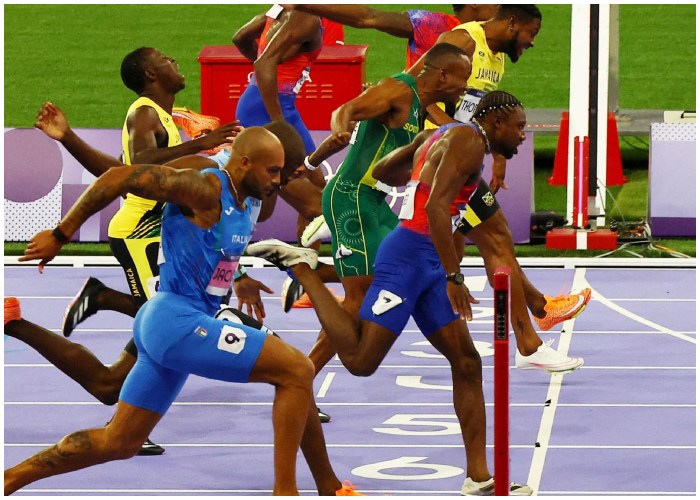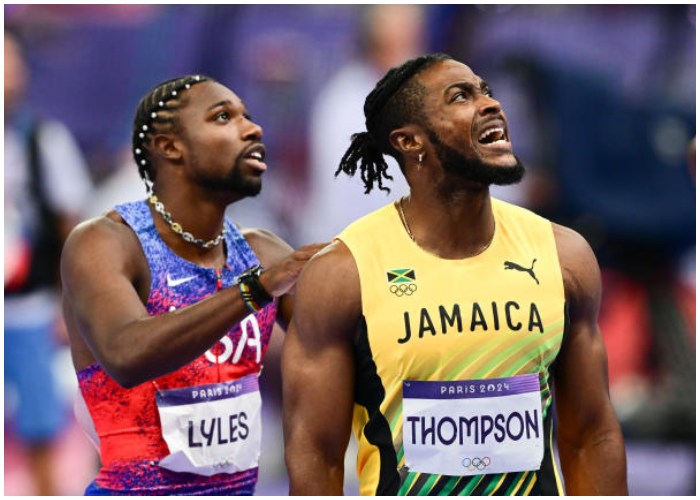Concerns about the state of U.S. sprinting can be put to rest after a thrilling performance in the 100 meters at the Paris 2024 Olympics. On Sunday, three U.S. sprinters reached the finals, and Noah Lyles emerged victorious in one of the closest races in Olympic history. With a personal best time of 9.784 seconds, Lyles edged out Jamaica’s Kishane Thompson by just 0.005 of a second. This victory not only secured a gold medal for Lyles but also reignited the dominance of U.S. sprinters on the global stage. Lyles’s win is a significant milestone, showcasing the depth and talent within the American sprinting community. The race was a dramatic spectacle that highlighted the intense competition and skill required to triumph at the highest level. Let’s delve into the details of this electrifying race and what it means for the future of American sprinting.

A Near-Perfect Race
In a race that could easily be mistaken for a photo finish, Noah Lyles pulled off a stunning victory. The 27-year-old sprinter’s win was a testament to his training, skill, and instinct. Lyles had to dip at the end to secure his win, finishing just ahead of Kishane Thompson, who also ran an impressive 9.79 seconds. Lyles’s teammate, Fred Kerley, took the bronze, adding to the U.S. medal tally. Despite initially believing Thompson had won, Lyles’s last-second lean made all the difference. “We were waiting for the names to pop up, and I’ll be honest, I came over and I was like, ‘I think you got the Olympics, dog,’” Lyles recalled. This victory highlighted Lyles’s ability to perform under pressure and his knack for making split-second decisions.

Reviving U.S. Sprinting Legacy
The significance of Lyles’s victory extends beyond just a gold medal. It marks the end of a long drought for U.S. sprinters in the 100 meters, a race historically dominated by Americans. The U.S. has won numerous gold medals in this event but had not secured a victory since Justin Gatlin’s win in 2004. Lyles’s win is a reminder of the rich legacy of American sprinting, echoing the feats of legends like Carl Lewis and Maurice Greene. His win brings back a sense of swagger and confidence to U.S. sprinting, which had been overshadowed by international competitors in recent years. “Knowing that at any time, somebody could pop up continues to fuel me,” Lyles said, underscoring the competitive spirit that drives him and his teammates.
The Role of U.S. Training and Coaching
While critics often cite the U.S. Olympic gold-medal drought as a sign of declining standards, the reality is more nuanced. The U.S. remains a powerhouse in sprinting, partly due to its robust training and coaching infrastructure. Many of the world’s best sprinters, including those from other countries, are trained in the U.S. For instance, Julien Alfred, Saint Lucia’s first-ever Olympic champion, trained at the University of Texas. This system not only develops homegrown talent but also attracts international athletes. The success of Lyles and his teammates is a testament to the effectiveness of this training system. By leveraging top-notch coaching and facilities, the U.S. continues to produce world-class sprinters who can compete at the highest levels.

Looking Ahead: The Future of U.S. Sprinting
Noah Lyles’s victory is more than just a personal achievement; it symbolizes the resurgence of U.S. sprinting. Lyles has ambitious plans for the future, both on and off the track. With the possibility of winning additional medals in the 200 meters and the 4×100 relay, Lyles aims to leave a lasting legacy. He also hopes to see greater commercialization and visibility for the sport. “I want to see a continuation of the ability to take advantage of moments for our sport,” Lyles said, emphasizing the need for broader access and exposure for track and field. His ultimate goal is to secure his own shoe deal, highlighting a gap in the market for sprinters. “I want my own sneaker; there ain’t no money in spikes,” he stated, pointing out the disparity in endorsements between sprinters and athletes in other sports.